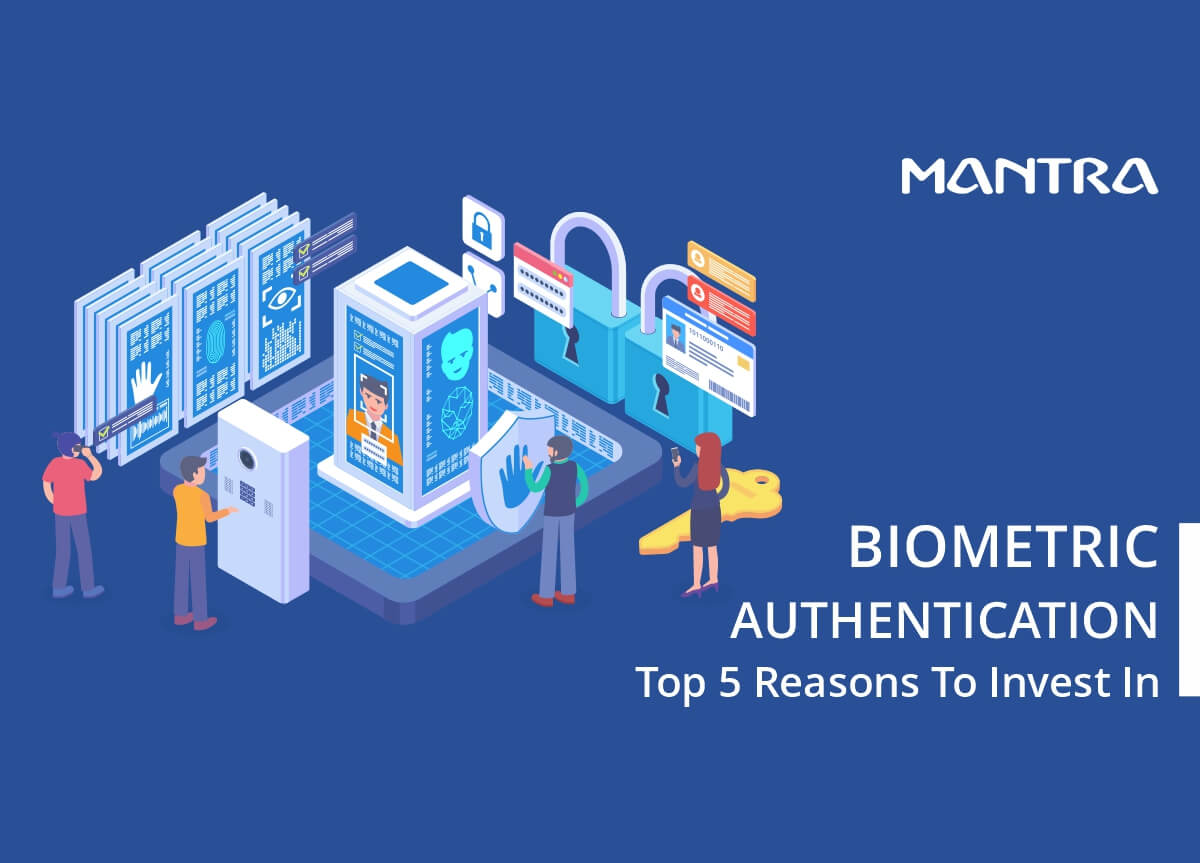
Humans have been guarding their own property since the dawn of time, when we first began amassing items to call our own. We used to store our goods in the actual world, but as we transitioned to the digital age, we began to store our data in digital places like social media, cloud storage, servers, and digital wallets like Dropbox and Google Wallet. In the beginning, we used passwords and PINs for protection. Then came biometric technology, which correctly identifies a person based on physiological and behavioural characteristics.
Biometric technology is evolving fast with the development of IoT and cloud computing. Biometrics has become the most trusted authentication method for everything from small personal wearable devices to high-security facilities. As technology is continually developing, many companies and individuals have switched to biometric authentication, and many more are trying to do so. In light of this, we provide you with some of the top reasons to choose biometric authentication. Before that, we would like to give a small glimpse into biometric technology.
What is biometric authentication?
Biometric technology identifies a person based on some aspects of their unique biology. A biometric device uses a person's unique biometric traits to create their identification and retains the identity for future authentication. Biometric authentication comes in several forms: fingerprint, face recognition, iris recognition, palm vein scanner, voice recognition, and gait recognition.
It is now being used in various sectors like airports, healthcare, BFSI, law enforcement agencies, defense, etc.
Top 5 reasons to choose biometric authentication
Individuals and companies have their own reasons for choosing biometrics according to their needs and mode of operations. Here are some of the common reasons for choosing biometric technology.
1. It improves security.
Unlike passwords and PINs, biometrics identify a person with their unique biometrics. Passwords and PINs can be stolen or easily guessed by outsiders. Since it is difficult to remember passwords for many people, they use guessable passwords or simple passwords. But biometric traits are unique to each person on the planet, and they are difficult to copy or spoof, making them unguessable.
2. User experience is convenient and fast
From a user's perspective, biometric authentication is extremely simple and fast, despite its complex internal operations. Typing in a long password with several special characters takes longer than simply placing your finger on a scanner and waiting a few seconds for it to access your account. In addition, most users make the error of forgetting their password. How likely is it that you will forget your own biometrics? Never!
3. Non-transferable
In order to use biometric authentication, the user must be present when being authorised. The only way to use most biometric identification systems is through a physical application; you cannot transfer or exchange a physical biometric digitally.
4. Near spoof-proof
Biometrics like face patterns, fingerprints, iris scanning, and others are near-impossible to replicate with current technology. There's a one in 64 billion chance that your fingerprint will match up exactly with someone else's. Said a different way, you have a better chance winning the lottery than having the same fingerprint as a hacker trying to get into your account that’s secured by biometrics.
5. Best Return On Investment (ROI)
Customers are increasingly expecting quantifiable advantages from their security systems in addition to the safety of people, buildings, and assets. The benefits of employing biometrics to drive business operations and other corporate processes are becoming part of the return on investment (ROI) "equation," according to the biometrics industry.
Many clients are now aware that investing in a biometric system will save them money in the long term. In two ways, a biometric system can provide cost reductions. First, the method eliminates the need to issue or replace cards and keys, which might be a significant cost that biometrics systems prevent. Another way to save money is to save time: By reducing obstacles to entry, both users and administrators save time. Time spent waiting in line to enter a building, time spent hunting for a key or card, time lost when a user can't enter a building because they don't have their key or card, and staff time required to provide a new key or card are just a few of the savings.
Surprisingly, several polls suggest that access and authentication issues account for roughly 30% of IT helpdesk resources. The estimated expenses can then be calculated by measuring the time spent by the IT helpdesk in resolving these issues. Calculate that percentage as a monetary amount of the overall help desk cost, for example, if it's 20% of daily activity. It's fairly uncommon to have a yearly recurring charge of $200 to $300 per employee for access difficulties over the course of a year. The hours spent on these repetitious duties by I.T. workers could be better spent elsewhere, according to this dollar drain. This waste of time and talent has a two-fold effect on the bottom line.
Inquire
If you are interested in purchasing biometric authentication devices or solutions, we can be your one-stop shop.
Inquire with our Inquiry Form or
Contact us at: sales@mantratec.com
What we offer:
Biometric devices
Access control systems
Solutions
POS devices
Biometric modules
Enrollment devices
Comments